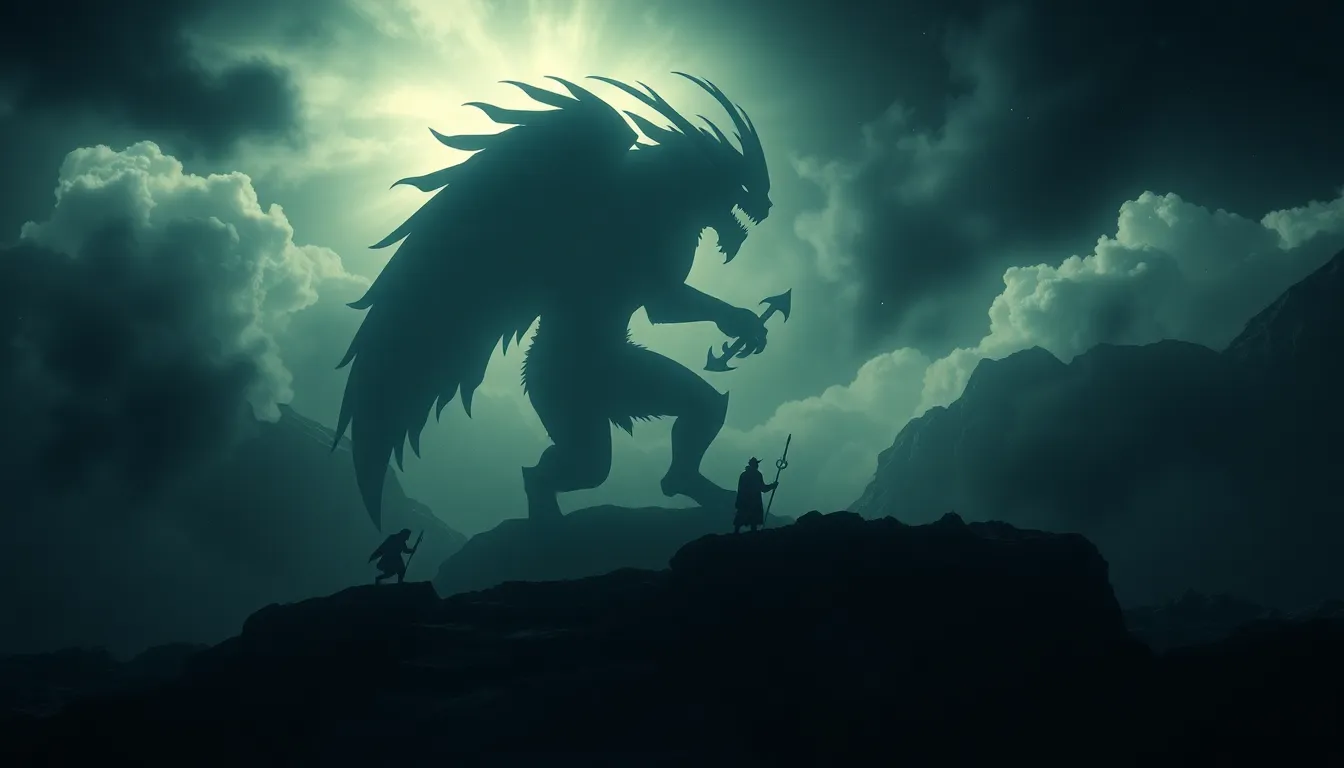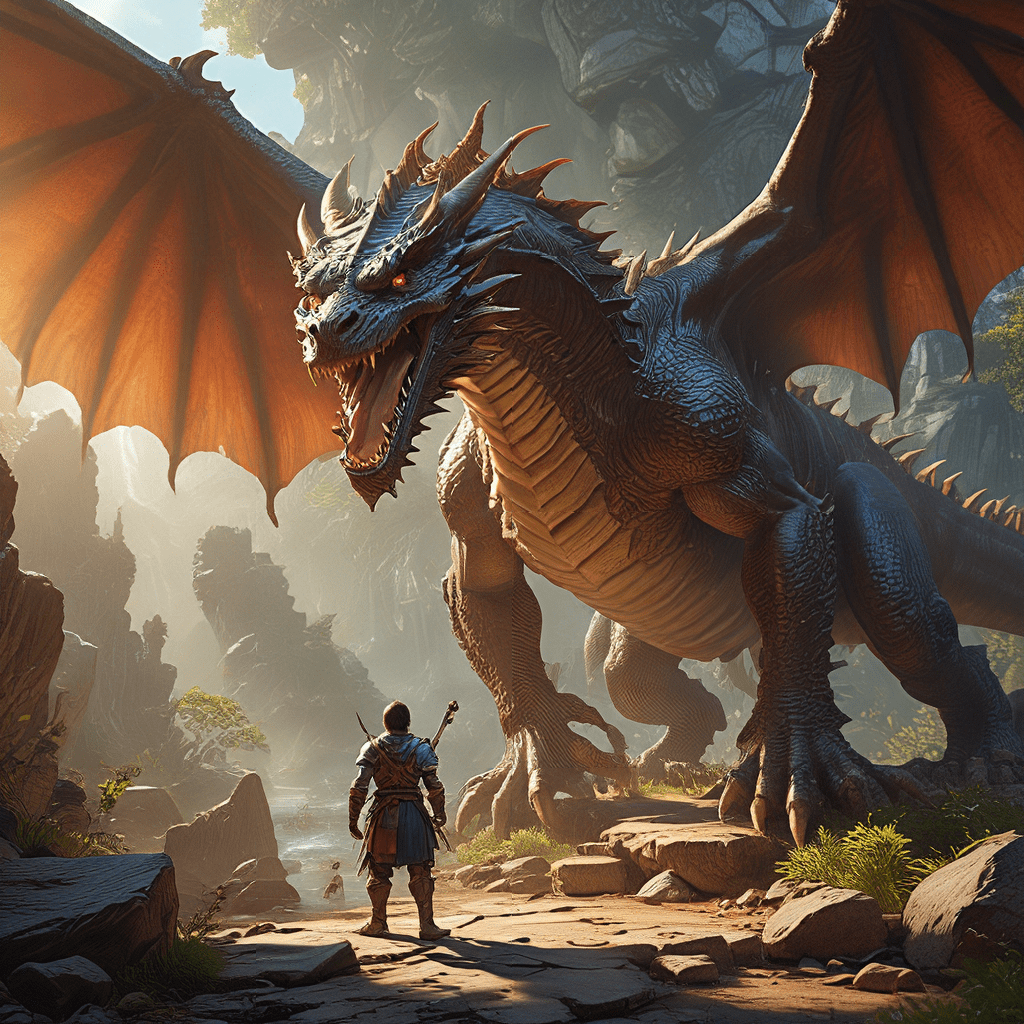The Roc’s Shadow on Greek Mythology: A Case for Influence and Adaptation
I. Introduction
The Roc is a legendary bird of enormous size, originating from Middle Eastern mythology, particularly noted in the tales of the One Thousand and One Nights. This magnificent creature is often depicted as a massive eagle or giant bird capable of carrying off elephants and ships alike. Its powerful presence in folklore has inspired various adaptations across cultures.
Greek mythology, rich in divine narratives and epic tales, has shaped the foundations of Western storytelling. It includes a pantheon of gods, heroes, and mythical creatures, each contributing to the cultural and philosophical fabric of ancient Greece.
This article explores the influence of the Roc on Greek mythology through adaptation and thematic parallels, revealing how this Eastern mythological figure resonates within the Greek mythos.
II. The Roc: Origins and Characteristics
The Roc finds its origins in Middle Eastern folklore, particularly in Arabian stories where it is portrayed as a formidable bird of prey, often described as having a wingspan so vast that it could block out the sun.
- Physical Description: The Roc is typically depicted with striking feathers, immense talons, and a beak capable of crushing its prey.
- Cultural Significance: In various cultures, the Roc represents strength, power, and the sublime forces of nature.
- Symbolic Meanings: It often symbolizes the unreachable, the extraordinary, and the awe-inspiring aspects of life.
When compared to other mythological creatures, such as dragons or griffins, the Roc stands out due to its singular focus as a gigantic bird rather than a hybrid creature, encapsulating a unique niche within the realm of mythological beasts.
III. Greek Mythology: An Overview
Greek mythology is characterized by its rich narratives, exploring themes of heroism, divine intervention, and the human condition. Central figures include gods such as Zeus, Athena, and Poseidon, each embodying various aspects of life and nature.
- Key Themes: Common themes include the struggle between fate and free will, the hero’s journey, and the relationship between mortals and immortals.
- Major Creatures: Greek mythology features a plethora of creatures, from the minotaur to the centaur, each serving unique roles within the stories.
Adaptation is crucial in Greek mythology, as stories evolve, incorporating new elements and influences from neighboring cultures and regions.
IV. Parallels Between the Roc and Greek Mythological Creatures
The Roc bears similarities to several figures within Greek mythology, particularly hybrid creatures like the Griffin.
- Griffin: A creature with the body of a lion and the head and wings of an eagle, the Griffin symbolizes strength and vigilance, much like the Roc.
- Giant Birds: In Greek myths, giant birds such as the Harpies and the Stymphalian Birds share thematic and symbolic attributes with the Roc, representing the chaotic forces of nature.
A comparative analysis reveals that both the Roc and these Greek creatures embody attributes of power, majesty, and the mysteries of the sky, emphasizing the interconnections between different mythological traditions.
V. The Influence of Eastern Myths on Greek Thought
The historical context of cultural exchanges between Greece and the East is well-documented, particularly during the Hellenistic period when trade routes and conquests facilitated the sharing of ideas.
- Evidence of Influence: Greek literature and art frequently reflect Eastern motifs, including depictions of giant birds reminiscent of the Roc.
- Case Studies: References to large birds in texts, such as those by Herodotus, may indicate the presence of Roc-like figures in Greek thought.
Artifacts from this period often showcase depictions of mythical creatures that blend characteristics from both Eastern and Greek traditions, suggesting a rich tapestry of cultural narrative.
VI. Adaptation of the Roc Concept in Greek Myths
The characteristics of the Roc underwent transformation in Greek narratives, adapting to local beliefs and storytelling traditions.
- Transformation: The Roc’s immense size and threatening nature might be distilled into smaller, more relatable figures within Greek stories.
- New Interpretations: While the Roc is often viewed as a terrifying force, Greek adaptations may present such creatures in a more nuanced light, embodying both danger and beauty.
The legacy of the Roc continues to echo in later mythological storytelling, influencing various narratives that emphasize the interplay between man and the majestic forces of nature.
VII. Conclusion
In summary, the Roc’s influence on Greek mythology is evident through thematic parallels and adaptation processes. By examining the characteristics of the Roc and its similarities to Greek mythological creatures, we uncover the rich interconnections between these cultural narratives.
The role of cross-cultural exchange in the development of myths underscores the importance of understanding how stories evolve over time, impacting contemporary interpretations of mythology.
Ultimately, the enduring impact of the Roc in mythology serves as a testament to the power of storytelling that transcends geographical and cultural boundaries.
VIII. Further Research and Implications
Future exploration can delve into specific instances of Eastern influence on Greek mythology, particularly through literary analysis and archaeological findings. The relevance of studying these mythological influences extends into contemporary culture, as modern storytelling often draws from ancient narratives.
In conclusion, the interconnectedness of global mythologies invites us to appreciate the shared human experience reflected in our stories, encouraging deeper insights into the cultural legacies that shape our understanding of the world.




